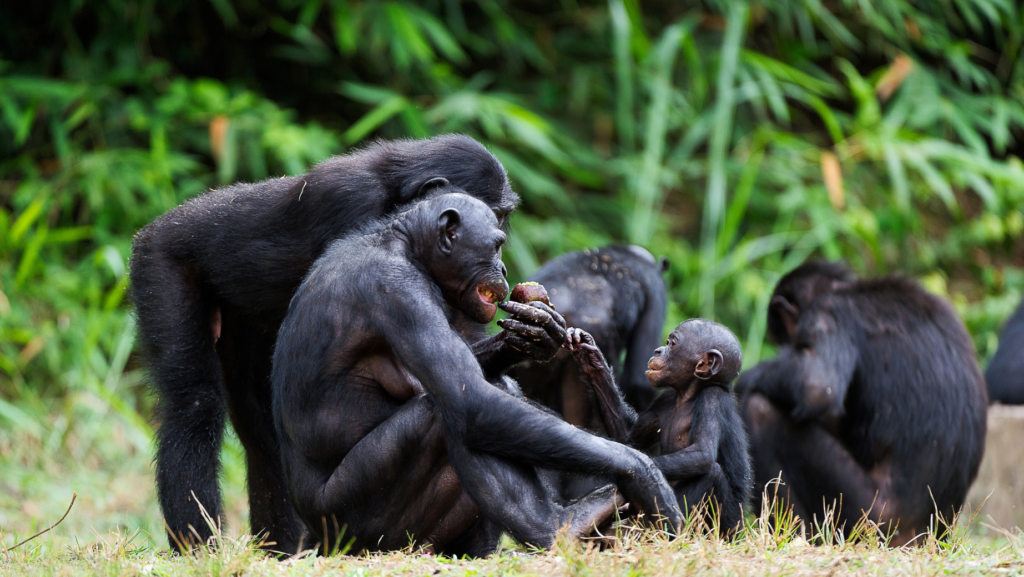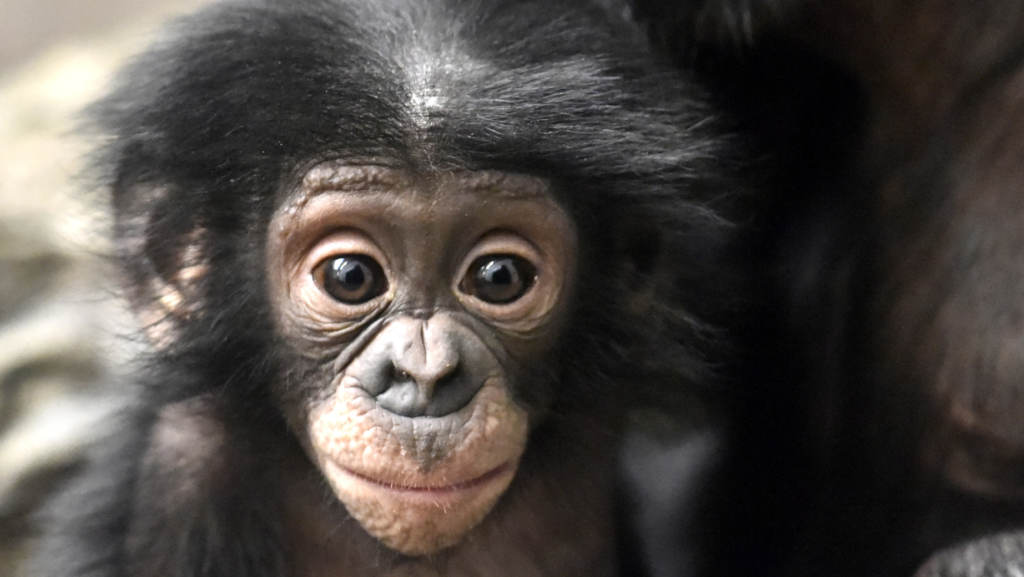Bonobos: Guardians of the Forest Canopy
Birth and Early Life:

Bonobos (Pan paniscus), close relatives to chimpanzees, are fascinating primates native to the dense rainforests of the Congo Basin in Central Africa. These intelligent and social beings undergo a fascinating life cycle. Bonobo infants are born after a gestation period of approximately 8 months, and they enter the world completely dependent on their mothers. The bond between a mother and her newborn is strong, with the young bonobo clinging to its mother’s belly for the first few months of life. During this time, the infant learns essential skills, socializes with other members of the group, and begins to explore its surroundings.
Grown-Up Life and Social Structure:
As bonobos grow, they exhibit a complex and egalitarian social structure. Unlike their chimpanzee relatives, bonobo societies are often characterized by female dominance. Females form close-knit alliances and collaborate to maintain social harmony within the group. Social interactions are crucial for bonobos, and they utilize grooming, play, and various vocalizations to communicate and reinforce social bonds. This cooperative and peaceful social structure sets bonobos apart from other primates.
Food Habits:

The diet of bonobos is predominantly vegetarian, consisting of fruits, leaves, stems, and other plant material. They are highly dependent on the abundance of the rainforest for their sustenance. Bonobos are also known to supplement their diet with insects, small mammals, and occasionally eggs. Their nimble fingers and strong jaws help them manipulate and consume a diverse array of foods. Their diet not only sustains them but also influences their social dynamics, as food sharing and communal foraging play significant roles in their daily lives.
Habitat and Lifestyle:
Bonobos thrive in the lush and dense rainforests of the Congo Basin. They are exceptional climbers, spending a considerable amount of time in the forest canopy. This arboreal lifestyle not only provides them with safety from predators but also allows for efficient foraging. Bonobos exhibit a semi-nomadic lifestyle, often moving in search of ripe fruits and other seasonal food sources. Their habitat, however, is under constant threat due to deforestation and human activities, making conservation efforts crucial to their survival.
Reproduction:

Bonobos, like other great apes, have a slow reproductive rate. Female bonobos typically give birth to a single offspring every 4 to 5 years. The strong social bonds within bonobo communities extend to parenting, as other females in the group often assist in caring for and protecting the infants. This communal parenting approach not only helps ensure the well-being of the young but also fosters cooperation and mutual support within the group.
Death and Conservation Status:
Bonobos, unfortunately, face various threats to their existence. Habitat loss due to logging and human encroachment, coupled with hunting for bushmeat and the illegal pet trade, poses significant challenges. While bonobos can live over 40 years in the wild, their populations are declining. Conservation efforts, such as protected reserves and education programs, are critical to preserving these remarkable primates.
In conclusion, bonobos lead intricately social lives within the heart of the African rainforest. From birth to death, their existence is intertwined with the delicate balance of their habitat and the relationships forged within their communities. Understanding and protecting these gentle and intelligent creatures is not only crucial for their survival but also for the preservation of the rich biodiversity of the Congo Basin. Through continued conservation efforts, we can ensure that the guardians of the forest canopy, the bonobos, continue to thrive for generations to come.

